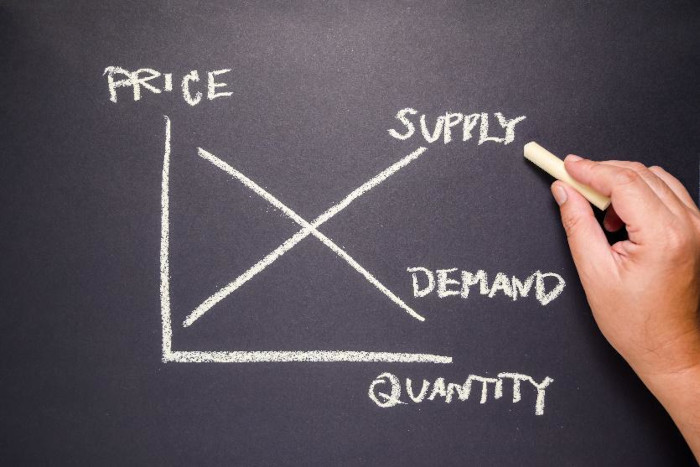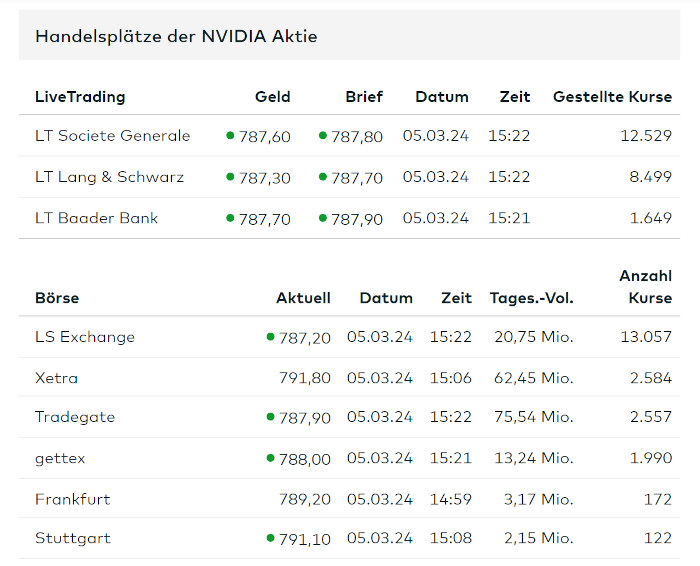Pricing Newsletter No. 82 (2024): The Price Question: Who Knows the Market Price?
Dear Readers,
during our pricing workshops, I typically inquire about the factors influencing pricing within one’s own company. The question aims to ascertain whether companies lean towards cost-based pricing, competition-based pricing, primarily focusing on market competition, or customer-centric value-based pricing.
Quite frequently, I receive the response: „We must consistently align with the market price.“ This may not necessarily apply to all customers and products but holds true for a significant portion of the business. In this pricing newsletter, I invite you to contemplate with me what the market price is, where we derive it from, and whether it serves as a viable metric for pricing.
Enjoy the following read.
Yours sincerely,
Prof. Dr. Hans-Christian Riekhof
What is a Market Price?
Let’s get some assistance and first ask ChatGPT for a definition of the term „Market Price“ (February 21, 2024):
„Market price refers to the current price at which goods, services, or assets are traded in an open market between buyers and sellers. It is determined by the forces of supply and demand, reflecting the prevailing balance between what buyers are willing to pay and what sellers are willing to accept.
Market price can fluctuate based on various factors such as changes in supply and demand conditions, shifts in consumer preferences, alterations in production costs, and external economic events. It serves as a crucial indicator of the value or worth of a particular item in the marketplace at any given time.“
So far so good. A generic and rather theoretical definition. The core question, however, is where the responsible executives obtain reliable and valid information about specific market prices in defined market segments.
And the second equally important question is what quantities are being sold (or even better: can be sold) at this market price.
Conditions for the Existence of a Market Price
If we briefly hold onto the idea that a market price is not just a theoretical model fiction but actually exists, then we need to briefly consider the prerequisites:
– It must involve perfectly identical products in this same market or market segment.
– There must be a large number of independent and equal-value providers.
– There must also be a large number of independent buyers.
– Market participants have no preferences for providers or buyers.
– The market must be spatially and temporally clearly defined (and sufficiently large).
Supply and demand determine price – in theory.
Source: © iStockphoto
Market Prices Emerge in Exchanges and Auctions
These ideal conditions are most likely present in exchanges, perhaps also in auctions. But what proportion of your business is conducted via exchanges and auctions?
Already in tenders, there are preferences for providers and qualitative criteria to be met in addition to the final offer price, influencing the ultimate decision and award. And from our project partners, we know that sometimes we are asked to revise individual positions of a tender if the prices don’t quite fit. I will address the topic of tenders in more detail in one of the upcoming newsletters. However, one can hardly speak of a „market price“ here.
Market Prices in Practice
In entrepreneurial practice, the market price is often referred to as a guideline when determining one’s own prices. However, there are evidently a few tangible problems with the „market price“ that I would like to address below.
1. Where do the „market prices“ and the corresponding volumes come from?
In the consumer goods sector, market research budgets are usually significantly higher than in the industrial goods sector. The markets are somewhat more anonymous because manufacturers do not really know their sometimes millions of customers; they need service providers for systematic market research. Furthermore, products in many segments are also more homogeneous (or at least largely interchangeable from the consumer’s perspective). This is referred to as brand parity when, from the consumer’s point of view, it doesn’t really matter whether I buy toothpaste A or B.
This leads to large and international market research institutes such as Nielsen or GfK in Nuremberg systematically processing market data (i.e., prices and quantities). In addition, many market research institutes offer similar data for specific industries.
However, these data are, in the vast majority of cases, past-oriented. They are often captured for specific periods using panels. And due to the regional aggregation of case numbers, they represent an average value, for example, for Germany, for the so-called Nielsen areas, or for Europe. I’ll come back to that.
For industrial goods, the data situation is usually much worse because products and services are much more tailored to customer requirements. Market data, market prices, and market volumes are therefore rarely available in a differentiated form from corresponding institutes.
In narrowly defined regions, market prices are formed.
Source: UCS GmbH
2. How up-to-date are the market prices and volumes?
As mentioned earlier, the overwhelming majority of cases reveal that the data is ex post captured. There is therefore a potentially significant time lag between the availability of market reports and the price decisions to be made.
Prices and quantities of securities traded on exchanges are, of course, very up-to-date. However, as the following figure shows, there are also very short-term fluctuations and different prices depending on the trading venue. A market price is therefore always only an average value for a defined period here as well.
Nvidia stock prices on 3/5/24: does a „market price“ exist?
A detailed look at financial markets illustrates how important a temporal information advantage regarding supply and demand can be. Extremely short-term price fluctuations in the segment of high-frequency trading are utilized for arbitrage transactions.
To gain an information advantage of fractions of seconds, investing in fiber-optic cables across the Atlantic has paid off to gain a knowledge edge and an advantage in largely automated and algorithm-based trading. So, when speaking of market prices, one must be very precise about the time frame in which this market price was measured – and what volumes were sold at this market price.
3. How well are market prices and volumes processed?
When market prices and volumes cannot be measured quasi-automatically based on digital processes, they are rather aggregated data obtained from samples or panels from the past. Interesting is the possibility of having data processed in the e-commerce sector by service providers using price crawlers. However, these typically have the major disadvantage that while prices and their changes can be recorded in extreme detail, information about the quantities sold at these prices is rarely available. Furthermore, the question arises, what the „market price“ is when it changes five times within an hour.
Partial price transparency arises in online market segments – but not necessarily combined with quantity transparency.
Source: © iStockphoto
At this point, a fundamental note is appropriate. When using the arithmetic mean in social (and thus economic) issues, you should always be very cautious. With the help of averages, data are condensed or aggregated – inevitably, information will get lost.
In particular, the dispersion of the original data is an important aspect. Therefore, for each mean, a measure of dispersion, such as the standard deviation, should be given. However, the indication of a parameter for the dispersion of the data, required for correct interpretation of a mean value, I’ve seen extremely rarily in the reports that I know from my pracital work.
Let’s consider a practical example (which Nicholas Taleb has emphasized among others).
How are income millionaires created during the morning commute on the S-Bahn?
Imagine you have the opportunity on the S-Bahn to calculate the average income of all 500 passengers. It is probably not far from the average of all German citizens, perhaps slightly influenced by the region and the neighborhood. And at the next stop, Bill Gates gets on. Then all passengers on their way to work become statistical millionaires. A compelling warning against the uncritical use of the mean value in social contexts!
So you have to know the outliers as well as the measure of dispersion when working with mean values, and if necessary, the data must be cleansed with appropriate statistical methods. So when average prices are mentioned to you as market prices, just ask for the standard deviation.
4. Which role do transaction costs play in the formation of market prices?
In neoclassical economic theory, there are no transaction costs. These are costs that arise for the initiation, execution, and completion of a market transaction, for example, costs of contractually securing risks or the information costs prior to a transaction.
This is, of course, quite unrealistic. Therefore, nowadays it is assumed in economic theory that transaction costs cause an important influence on purchasing decisions. Are transaction costs adequately represented in the reports on the development of market prices? Do transaction costs perhaps even make the actual difference as to whether a deal comes about?
We have carried out various pricing projects in the area of completely interchangeable commodities (think of sand and gravel, where even the grain size is precisely specified). Here, transaction costs, especially, make the crucial difference. Do not only think of the obvious transport costs but also be aware of costs of contract processing and information procurement, insurance premiums, certifications, legal advice costs, and contract conclusion costs. Do the „market prices“ really reflect these transaction costs?
5. Which role do transaction benefits play?
From research in behavioral economics, we know that transactions not only incur costs but that they can also inherently have a benefit. From the perspective of neoclassical economics, this is quite radical, but from a psychological perspective, it is almost trivial.
According to Behavioral Economics, every purchase plays a role in who I buy from and in what situation I find myself. According to Behavioral Economics, some sellers are more likable or trustworthy than others, to put it in a very simple formula. Do you remember when you bought your first used car?
In some situations, according to Behavioral Economics, the purchasing action itself has a much higher value or benefit than under other circumstances. These transaction benefits are generally not captured by a market price – but they may play a potentially important role in concluding deals.
6. Do companies and consumers rely on „transactions“ or „relations“?
The existence of a market price presupposes that the parties involved have no preferences for a provider – every supplier is equally good and easily replaceable. Is that realistic? We have already discussed this question in connection with transaction benefits, but here it is about the longer-term dimension.
Most purchasing and procurement processes do not take place on (perfect or) perfect markets but within an existing supplier-customer relationship. It’s called „relations“ instead of „transactions.“ Every consumer has their favorite Edeka or Rewe around the corner, and I have been filling up at Esso for years just because the tenant of the gas station was simply nice and friendly (the mentioned transaction benefits). And even in the B2B sector, it happens that some suppliers are „definitely not“ an option, while there is a long-standing trust relationship with others.
So, what proportion of our goods do we procure on „perfect“ markets, where only the market price determines the outcome? And what is the proportion of customers in B2B markets who can switch suppliers very quickly without processing problems? In my LSDC matrix (refer to my Pricing-Newsletters No. 10, No. 11, No. 31, No. 40 und No. 70)
I describe that customers do not always exhibit the same price sensitivity in every situation.
It would be best if you labeled the customers in your systems who are „at risk of defection,“ willing to switch, and particularly price-sensitive – as opposed to the regular customers, who are, in our experience, significantly less price-sensitive.
What does this mean for the market price? If the deals at hand are „transactions,“ the existence of a kind of market price is more conceivable. If you maintain trusting, longer-term customer relationships in terms of „relations,“ then the idea of the market price could prove to be unrealistic.
The Market Price: An Illusion from Economics Undergraduate Lectures
Let’s summarize our considerations. We should indeed be skeptical when offered information about the market price. What are the sources of the data, what period do the data cover, and what spatial or regional delimitation do the data refer to? Are there only means or also data on the standard deviation of the values? And above all: Are the providers and buyers as well as the goods completely interchangeable, or do the market participants have preferences?
The „market price“ will turn out to be an illusion in many cases. It’s better to focus on meticulously researching the willingness to pay of your (potential) customers. And find out why your customers are willing to pay 5 or 10% more with you than with the competition. This price differential is far too rarely the subject of careful empirical analysis.
I look forward to your comments, remarks, examples and experiences on the topic of market prices – preferably directly to riekhof@nullunicconsult.com.
—
Best wishes, and until the next Pricing Newsletter – and perhaps we’ll see each other soon in Hamburg at one of my Pricing-Seminars?
Yours sincererly
Prof. Dr. Hans-Christian Riekhof
Nehmen Sie an unserem Pricing-Seminar teil!
Nutzen Sie den Preis als strategischen Hebel zur Schaffung eines größeren Mehrwerts!
Der Pricing-Newsletter
Abonnieren Sie ihn kostenlos und bleiben Sie auf dem Laufenden!





